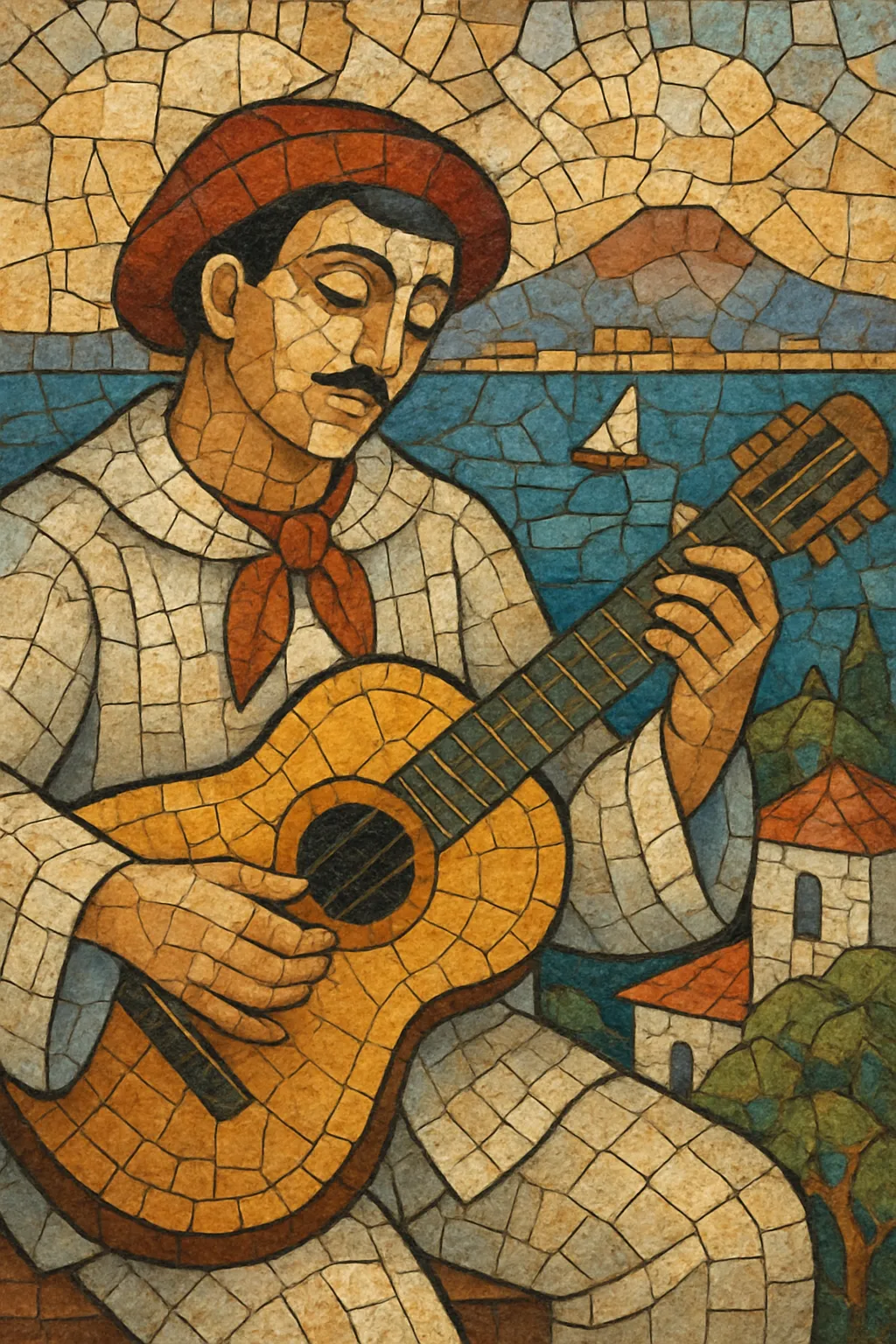Canzone napoletana (Neapolitan song) is a lyrical, melodically rich tradition from Naples, Italy, sung primarily in the Neapolitan language. It fuses folk street-song roots with operatic bel canto phrasing and salon/classical songcraft.
Characterized by soaring vocal lines, emotive rubato, and memorable refrains, it often features themes of love, longing, the sea, and the city of Naples itself. Typical accompaniments include guitar, mandolin (with tremolo), piano, or small orchestra, supporting strophic or verse–refrain forms that spotlight the singer’s timbre and expression.
Iconic standards such as “’O sole mio,” “Funiculì funiculà,” “Torna a Surriento,” and “Santa Lucia” became international calling cards for Italian vocalism, helping define the archetype of the tenor-led popular ballad.
Neapolitan song emerged in the 1800s from a blend of local folk practices, salon music, and the prestige of Italian opera. The Piedigrotta festivities in Naples—religious-processional events that evolved into song competitions and commercial showcases—played a key role in commissioning and popularizing new songs. Early exemplars like “Santa Lucia” (arranged by Teodoro Cottrau) captured a barcarolle feel tied to Naples’ maritime identity.
The genre flourished with professional composers and lyricists (e.g., Eduardo di Capua, Ernesto De Curtis, Salvatore Di Giacomo), producing enduring standards such as “’O sole mio” (1898) and “Torna a Surriento” (1902). The advent of recording and the star tenor phenomenon—epitomized by Enrico Caruso—projected Neapolitan songs globally, cementing their status as both popular hits and showcase pieces for bel canto technique.
Through the 1920s–1950s, canzone napoletana adapted to radio, cinema, and cabaret, intersecting with sceneggiata (Neapolitan musical melodrama) and urban dance-band idioms. Interpreters like Beniamino Gigli and Tito Schipa carried the operatic lineage, while Roberto Murolo’s anthologies curated the tradition. After WWII, the Festival di Napoli (1952–1970) institutionalized the repertoire, and artists such as Sergio Bruni, Aurelio Fierro, and later Massimo Ranieri refreshed its popular appeal.
Mass migration from southern Italy (late 19th–early 20th century) spread the songs to North and South America, where they influenced the image of Italian vocal music and fed into the evolution of traditional pop and classical crossover. Today, the repertoire remains a staple for opera-crossover singers and is continually revisited in acoustic, jazz, and orchestral formats, maintaining a living link to Naples’ cultural identity.


